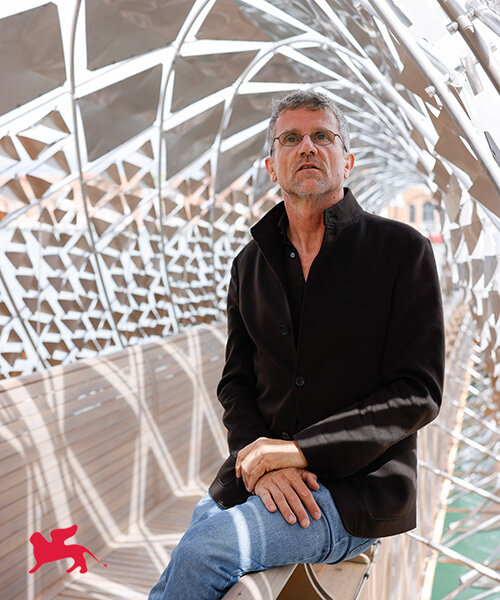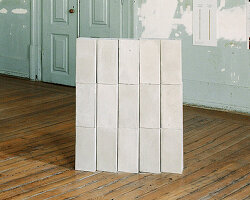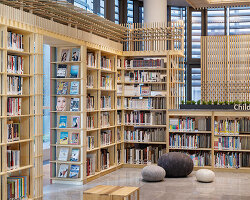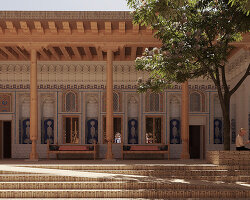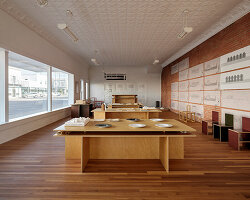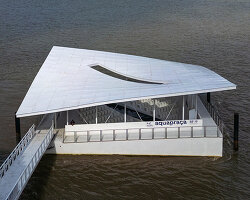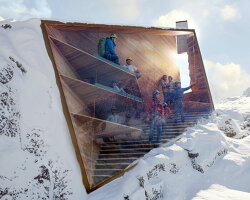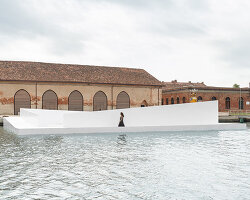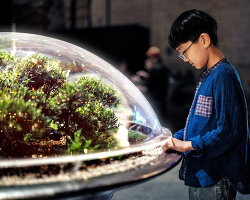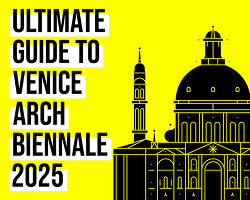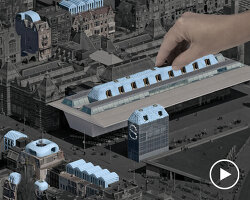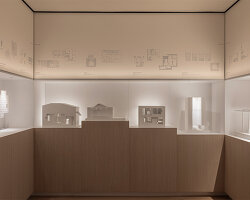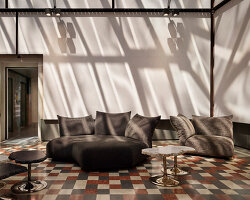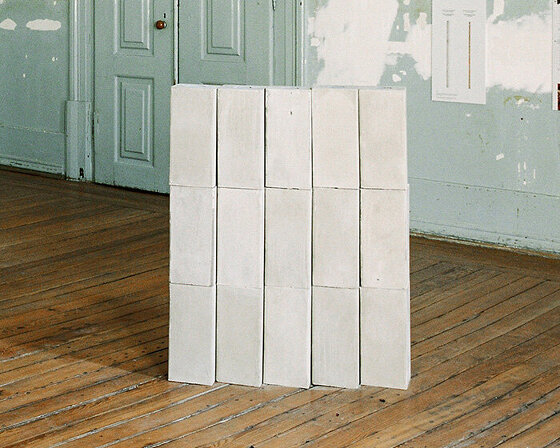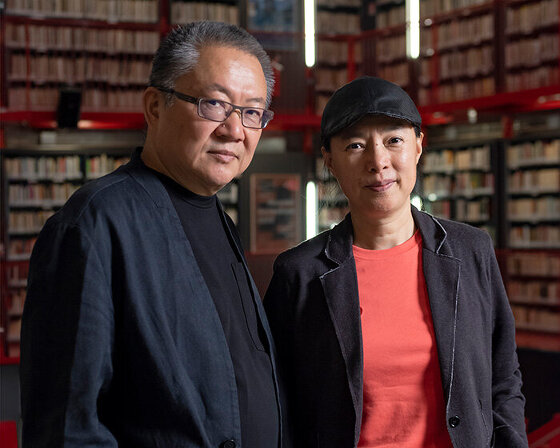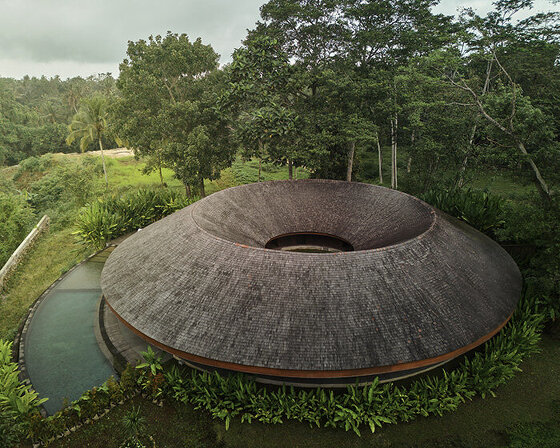INTERVIEW WITH VENICE ARCHITECTURE BIENNALE CURATOR CARLO RATTI
The 2025 Venice Architecture Biennale opens its doors from May 10th to November 23rd, transforming the city into a global stage for architectural innovation, critical discourse, and creative exchange. Titled Intelligens. Natural. Artificial. Collective., the 19th International Architecture Exhibition is curated by Italian architect and MIT professor Carlo Ratti, who reimagines the role of intelligence in shaping the built environment. During the preview days, we met Ratti in Venice to discuss this year’s theme, his curatorial approach and how the interdisciplinary selection of participants in the main exhibition feeds into the wider discussion around the future of architecture. ‘It’s basically about how we can use different disciplines and different forms of intelligence in order to tackle the most important problem today: adaptation,’ he tells us while reflecting on the urgency of adaptation across disciplines. ‘In short, you could say architecture is survival.’
Set across three venues, the Arsenale, the Giardini, and Forte Marghera, the 2025 edition hosts national pavilions from 66 countries, including debut entries from Azerbaijan, Togo, Qatar, and Oman. As climate change looms large over the city and the planet, the Biennale frames architecture as an active participant within this global condition as a practice of transformation. Through various projects, installations, and dialogues, the Exhibition examines how architecture can help shape new ecologies of intelligence, ones that are deeply material, inherently collective, and urgently needed.
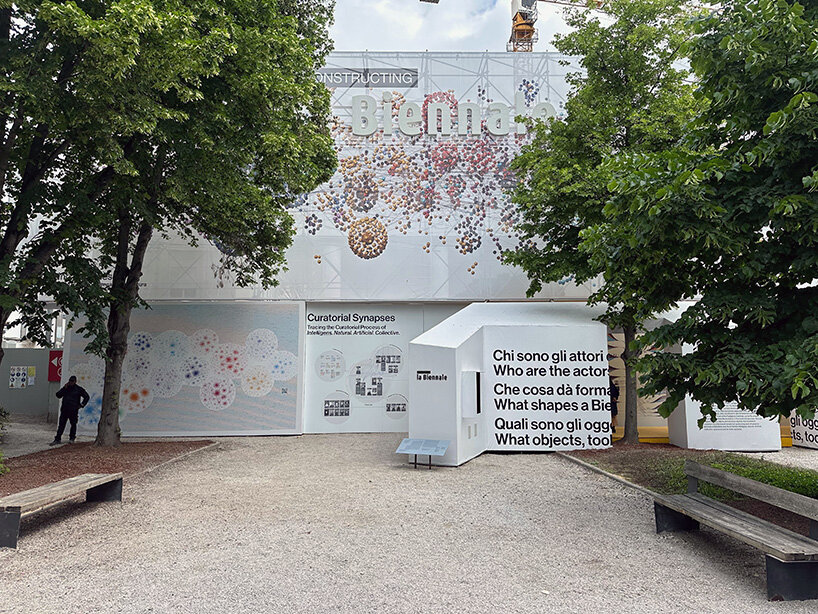
the Central Pavilion is under renovation, but its facade delves into the 2025 curatorial process with ‘Constructing La Biennale’ | image © designboom
Intelligens. Natural. Artificial. Collective. OPENS ON MAY 10TH
Rooted in the Latin word gens, meaning people, the theme calls for a redefinition of intelligence as a shared, evolving force, transcending binaries and embracing collaboration across disciplines. Visitors will encounter a deeply interdisciplinary approach, where architecture meets data science, biology, planetary systems, and engineering to envision a more adaptive and resilient urban future. ‘In the past, architecture has looked at different disciplines—think politics, the arts, and so on—but usually by venturing out into those areas. Now it’s almost the opposite. […]Architecture is kind of at the center, with other disciplines supporting it,’ Ratti tells designboom.
At the heart of Carlo Ratti’s curatorial vision is the climate emergency: a force already reshaping how we live and build. From wildfire-resilient structures to water-sensitive urbanism, the Biennale encourages bold, cross-disciplinary thinking to reimagine architecture as a living, evolving force. The 2025 exhibition becomes a dynamic platform for over 750 participants, from architects and artists to climate scientists, farmers, chefs, programmers, and philosophers. Selected through an open and decentralized process led by an interdisciplinary curatorial team, the contributors range from emerging talents to renowned figures such as Patricia Urquiola, BIG, and Kengo Kuma. ‘For the first time in the history of the Biennale, we launched an open call—for people from all over the world to submit ideas,’ explains the curator. This radical inclusivity challenges traditional notions of authorship, favoring collaborative models more akin to scientific research than solitary design genius. ‘It’s a bit like a chain reaction,’ he adds. Read on for our full conversation with Carlo Ratti, where we delve deeper into the ideas behind this year’s Biennale.
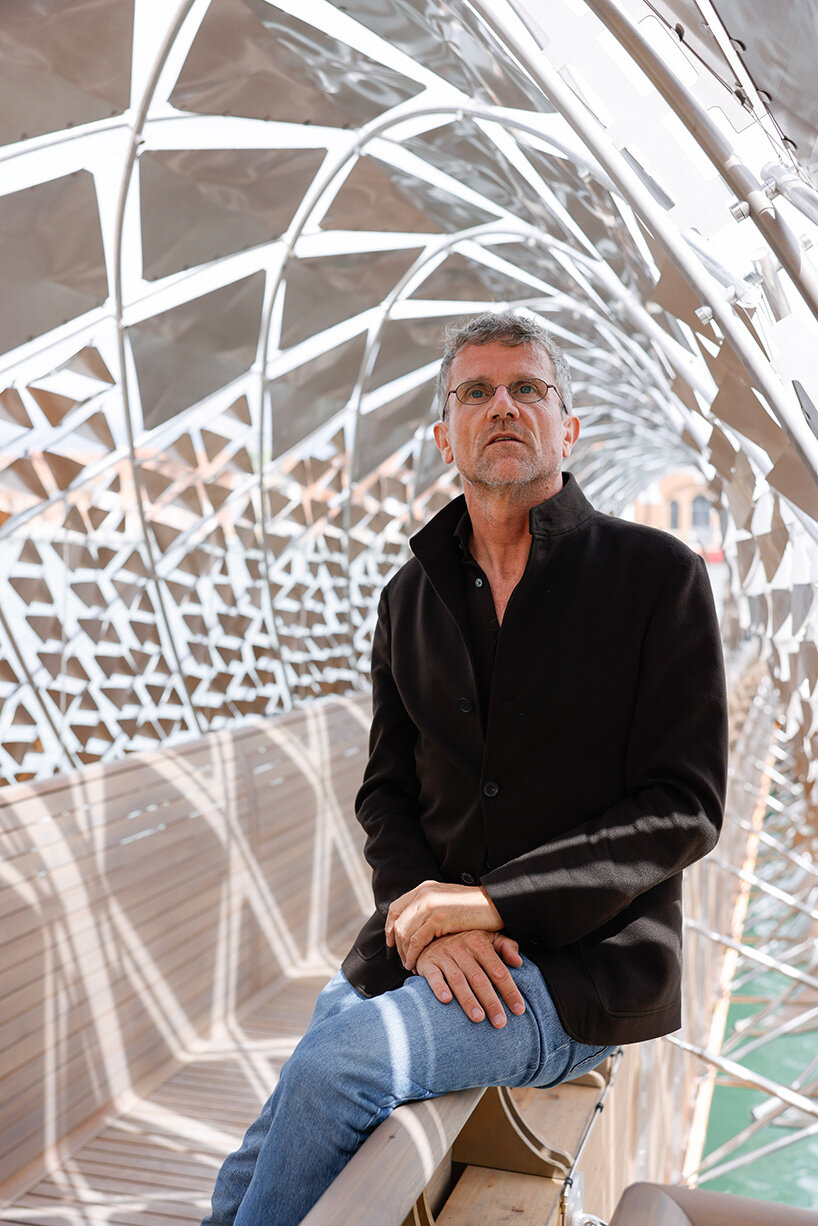
Carlo Ratti | image © Jacopo Salvi
RATTI ON THE 19TH INTERNATIONAL ARCHITECTURE EXHIBITION
designboom (DB): The exhibition brings together over 300 contributions from more than 750 participants, from architects to artists, chefs, photographers, coders, fashion designers, and many more. What does such an interdisciplinary selection, a first for the Venice Biennale, bring to the conversation around the future of architecture?
Carlo Ratti (CR): That’s really one of the key points, and I think it’s very important. In the past, architecture has looked at different disciplines—think politics, the arts, and so on—but usually by venturing out into those areas. Now it’s almost the opposite. Architecture is focusing on the built environment because, when it comes to adaptation, the built environment is the key mechanism through which we can respond to a changing climate and a changing planet. Other disciplines are now coming in to support that. Architecture is kind of at the center, with other disciplines supporting it. And the reason is – you know Herbert Simon, who won the Nobel Prize in the last century – wrote a beautiful book called The Sciences of the Artificial. In it, he says science looks at how the world is, and architecture and design look at how the world could be, or ought to be. When you put the two together, you combine the creativity of architecture with the grounding of physical laws and other constraints of the planet. That way, other disciplines can support how we adapt.
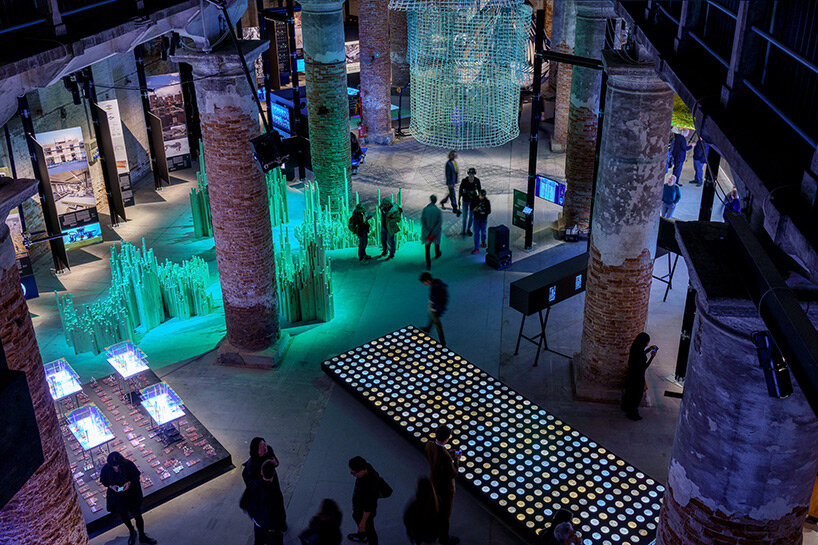
The Arsenale | image © Andrea Avezzù, courtesy La Biennale di Venezia
DB: The theme identifies three intelligence directions, natural, artificial, and collective, and sets a clear path structure inside the Arsenale. Yet, walking through the exhibition, it often feels more like a weaving of the three into ecosystems of coexistence. Was that sort of blending intentional, and what does it achieve?
CR: Because of the sheer density of the subject, we thought it was important to separate them, more as a tool to clarify the exhibition. But they all stem from one notion of intelligence. Take the ‘artificial’ for example. First, we look at the natural and artificial together. One project explores AI but with the aim of better understanding nature. Or take the ‘collective’ – there are projects using different technologies to understand favelas. So yes, there’s a lot of blending. That was intentional.
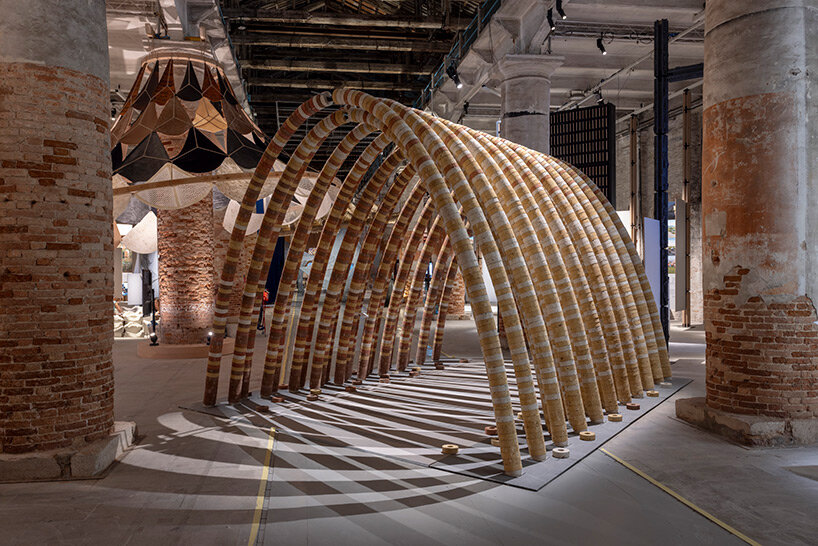
ELEPHANT CHAPEL by Boonserm Premthada | image © Marco Zorzanello, courtesy La Biennale di Venezia
DB: How do you see the national pavilions’ response to the theme?
CR: I was really pleased with the work done by the National Pavilions, all 66 of them this year. Every year they bring strong contributions. But often there’s no common theme, so while everything may be beautiful, it can feel like a hodgepodge. The first person who really tried to create a common thread was Rem Koolhaas in 2014. I was lucky enough to be invited that year, and I remember him telling me about it—and he achieved it, to a certain degree. This year we tried something similar, but in a more bottom-up way. We gave a theme: one place, one solution. Then we held a number of meetings with the National Participants, where curators presented their ideas. Slowly, the excitement around the theme grew, and most of them engaged with it deeply. The is a certain ‘chain reaction’ we aimed for, from salons, to submissions, to the whole collaborative process that shaped this year’s exhibition.
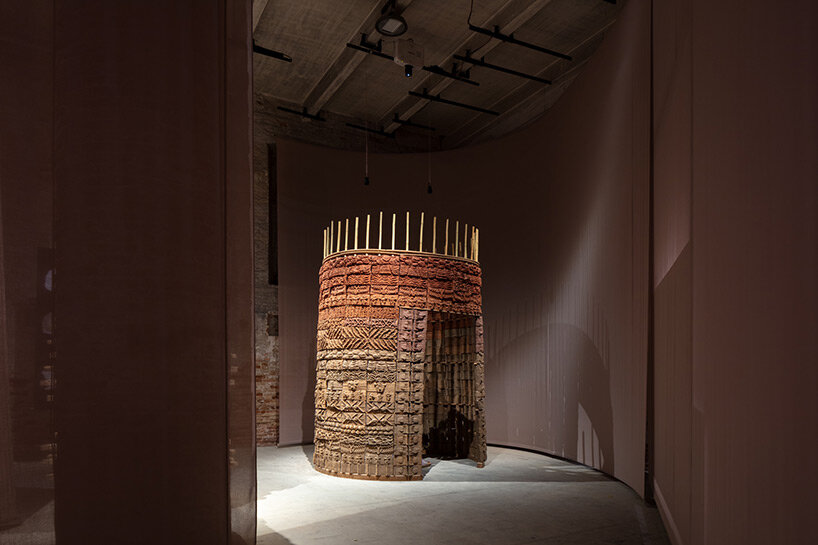
Data Centres and the City – From Problem to Solution on the Path to Sustainable Urbanism | image © Luca Capuano, courtesy La Biennale di Venezia
DB: You mentioned the salons that you organized during the past year. How was that process? Did it succeed in achieving what you hoped for?
CR: The process was very enriching. The salons were moments of that chain reaction I mentioned earlier. We’d have aperitivos, dinners, lunches. In Dubai, for instance, we had a beautiful midnight barbecue in the desert. In Zurich, a breakfast at 7 a.m. In London, we had a lunch. These events usually happened when I was already traveling – I didn’t go specifically for them – but they became moments to meet local communities: scientists, writers, mayors, and more.
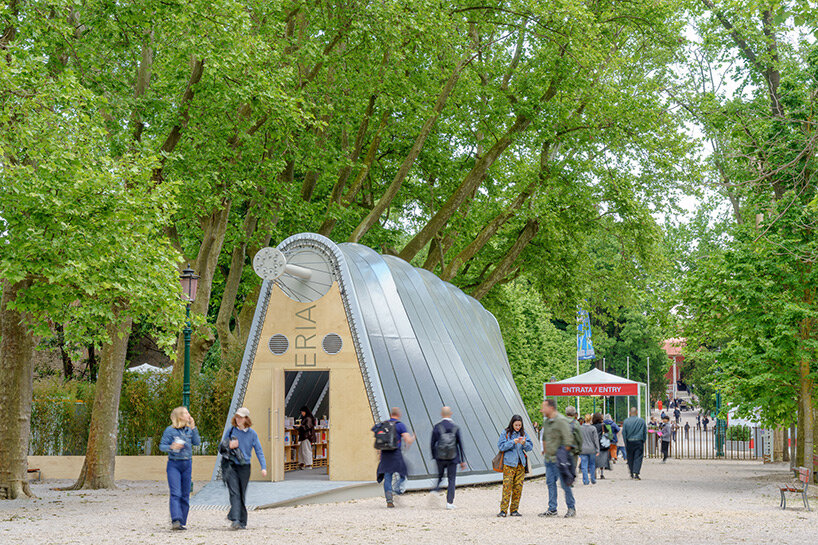
LA LIBRERIA | image © Andrea Avezzù, courtesy La Biennale di Venezia
DB: It feels like this is the first time the curatorial process is so open and accessible.
CR: Yes, and actually you might find this interesting. One of our teams focused on documenting the process. A truly interdisciplinary group. Albena Yaneva – an anthropologist who also wrote a book on OMA; Albert-Laszlo Barabási – the founder of Network Science; Paolo Ciuccarelli – a professor from Northeastern University in Boston; and Michele Bonino from the Politecnico di Torino, who coordinated and translated all this into the exhibition space. You’ll see the result in front of the Central Pavilion at the Giardini. It’s a way to reflect on and learn from the open process, and to let it continue through the Biennale. We actually recorded everything – thousands of hours of Zoom meetings.
All of this data was given to Albena and analyzed, and shows how it all came together.
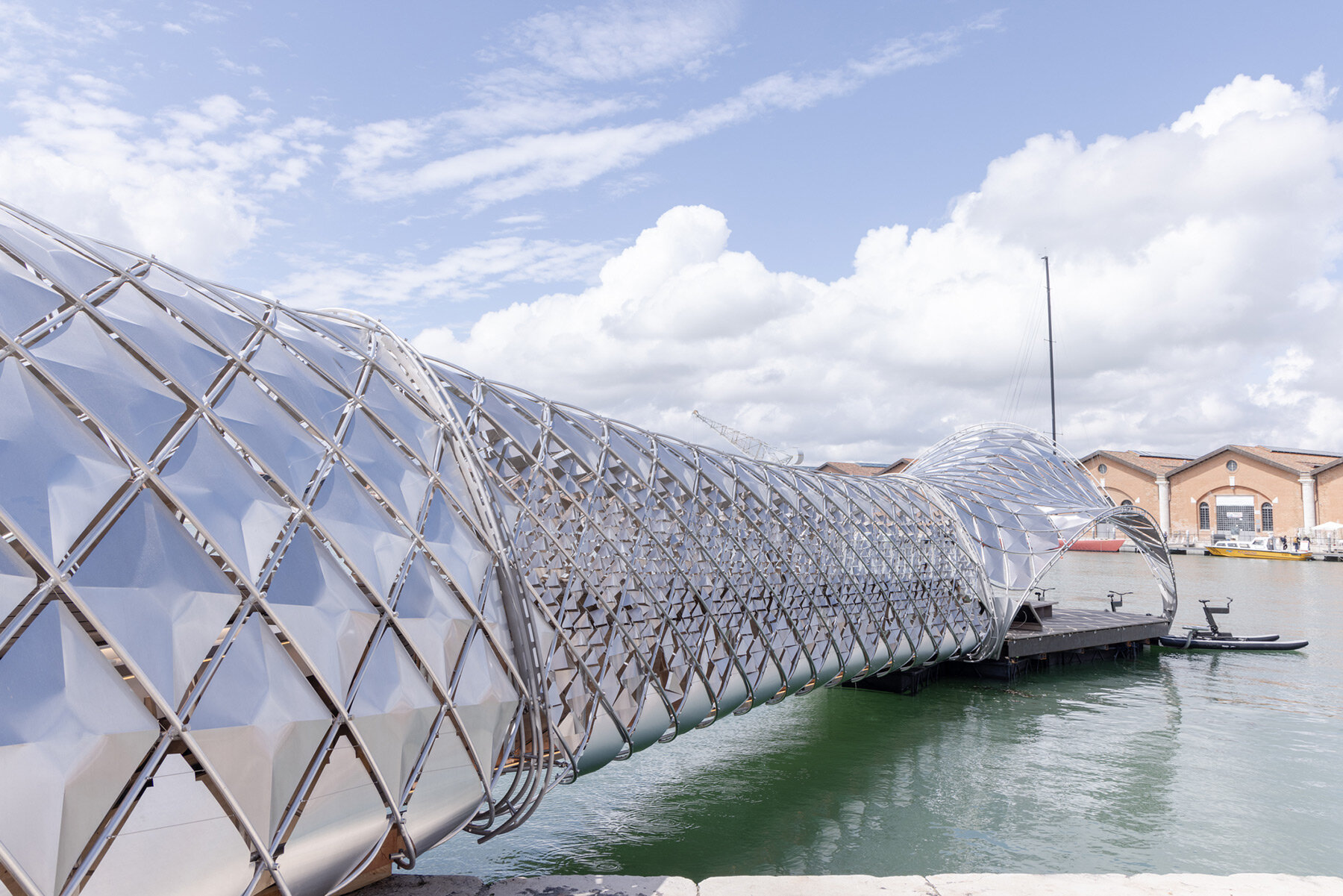
Gateway to Venice’s Waterways, Norman Foster Foundation & Porsche | image © Marco Zorzanello, courtesy La Biennale di Venezia
DB: The presence of artificial intelligence is strong, both through the selection of projects and participants utilizing it in various forms, and through the short AI summaries in all the signage. Amid the ongoing debate on what role AI is playing in shaping our future, the exhibition seems to take a positive, optimistic outlook on its potential. What is your take on how architects and designers can make use of it to humanity’s advantage?
CR: Yes, we collected all the project descriptions manually at first and we thought: let’s go one step further. We asked ChatGPT to make the descriptions even shorter and more accessible.
I’d say this exhibition isn’t about AI – it’s about multiple forms of intelligence: natural, artificial, and collective. Yes, AI is part of that. But more broadly, architecture is about the future. As Karl Popper said, the future is open – it’s not predetermined. And architecture is about shaping that future. If that’s the case, Popper also said optimism is a duty. Because shaping the future is in our hands.
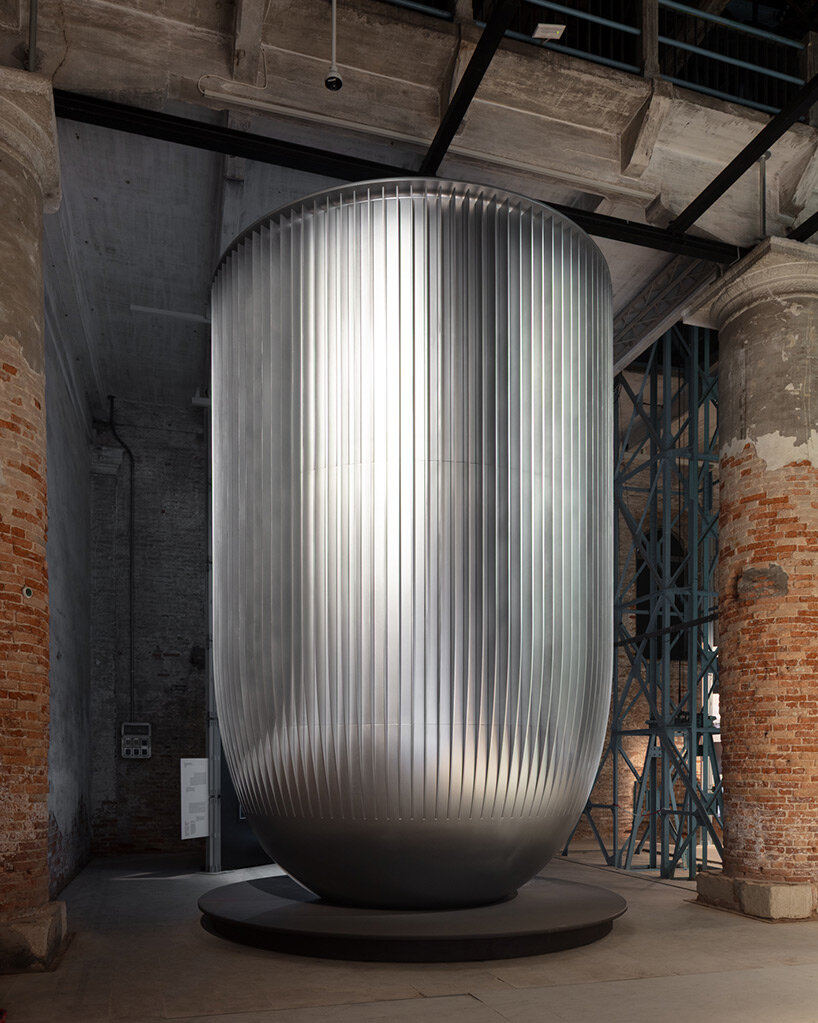
‘Undefined,’ Pininfarina, newcleo, Fincantieri | image © Luca Capuano, courtesy La Biennale di Venezia
DB: You recently also developed the SEA BEYOND Ocean Literacy Center with Prada, and you are participating in the first Venice Climate Week taking place this June. Can you tell me more about these initiatives, and whether there any connections to be drawn between them and the ongoing Biennale?
CR: They’re part of that same chain reaction I mentioned earlier. The Biennale becomes a node in a much larger network. So yes, the collaboration with Prada and UNESCO on the Ocean Literacy Center is part of that. There will be many more initiatives throughout the next six months. That’s why we called the second part of the Biennale theme ‘gens’ meaning ‘people.’ In the central space, we’re setting up a ‘speaker’s corner’, a place for discussion. And for the first time, we’re building a local network in Venice. We’ve partnered with Venetian associations, students, professors – a true local integration, which has always been talked about but rarely implemented.
DB: The notion of the chain reaction keeps coming back in our conversation. What do you hope will be the impact of this Biennale? What would make it a successful project for you?
CR: That the chain reaction continues. That’s the hope. That would be success.
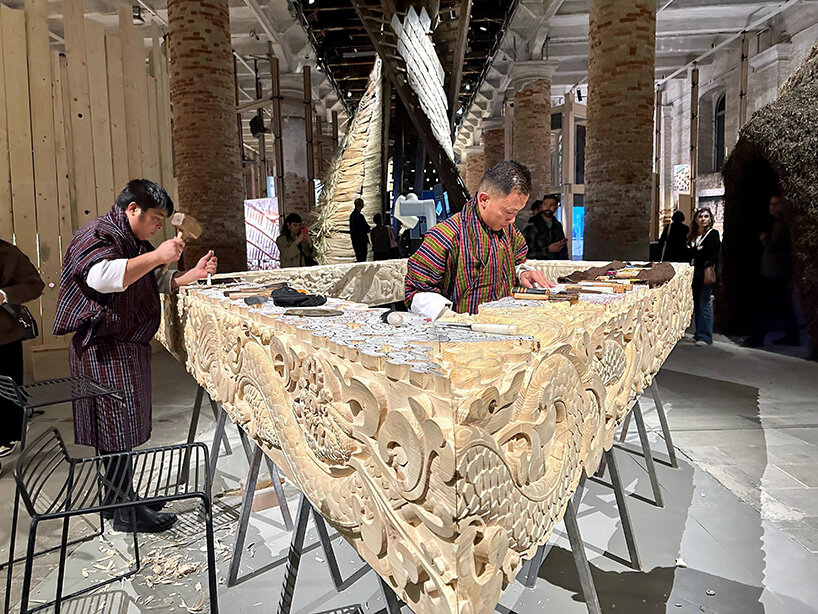
Ancient Future by BIG, Arsenale | image © designboom
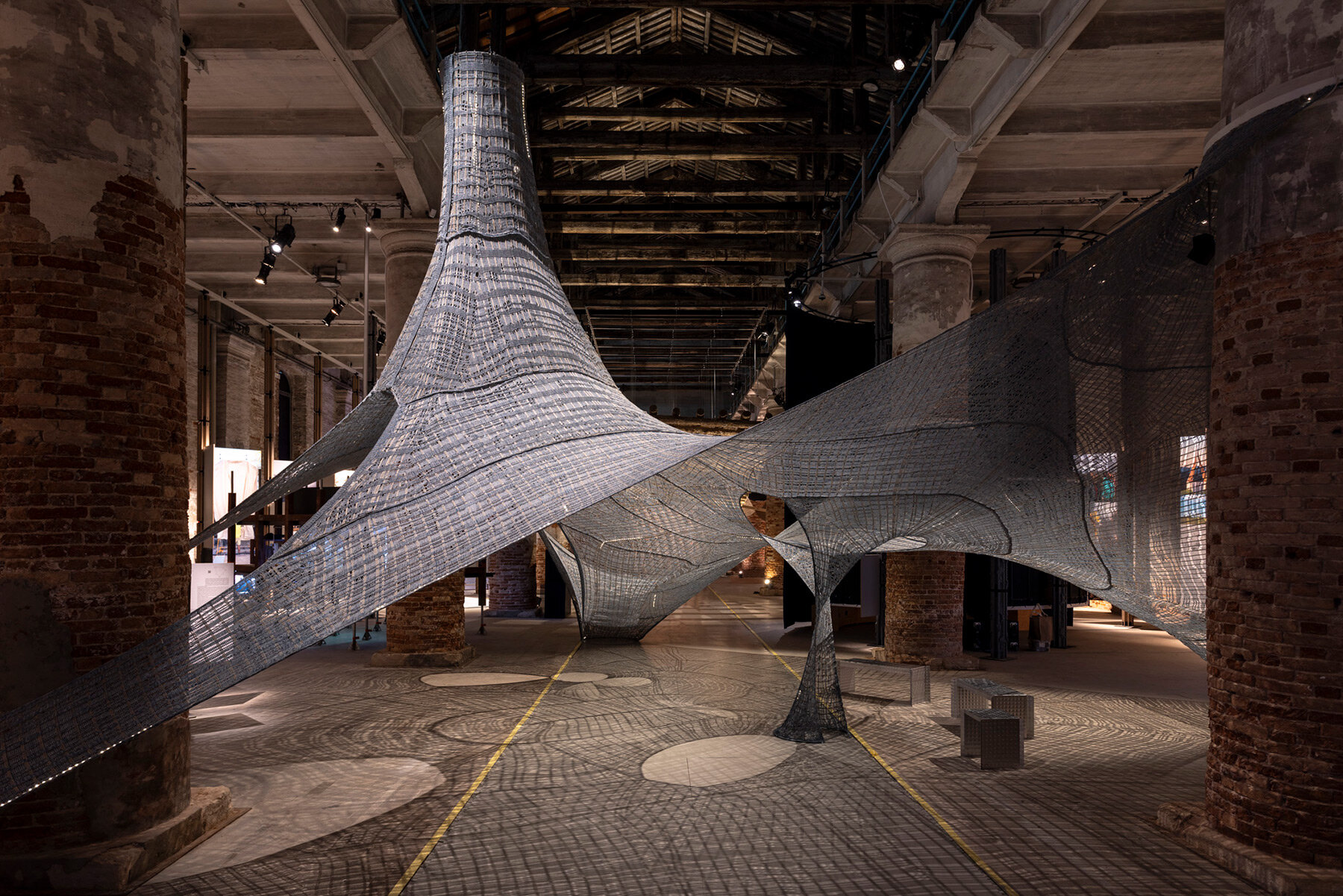
NECTO by SO – IL, Mariana Popescu, The GreenEyl, Riley Watts | image © Marco Zorzanello, courtesy La Biennale di Venezia
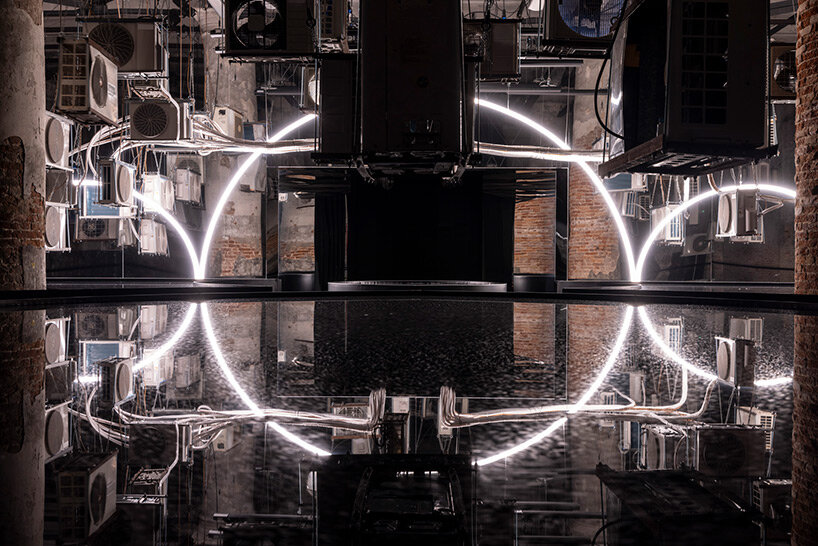
TERMS AND CONDITIONS by Transsolar, Bilge Kobas, Daniel A. Barber, Sonia Seneviratne | image © Marco Zorzanello, courtesy La Biennale di Venezia
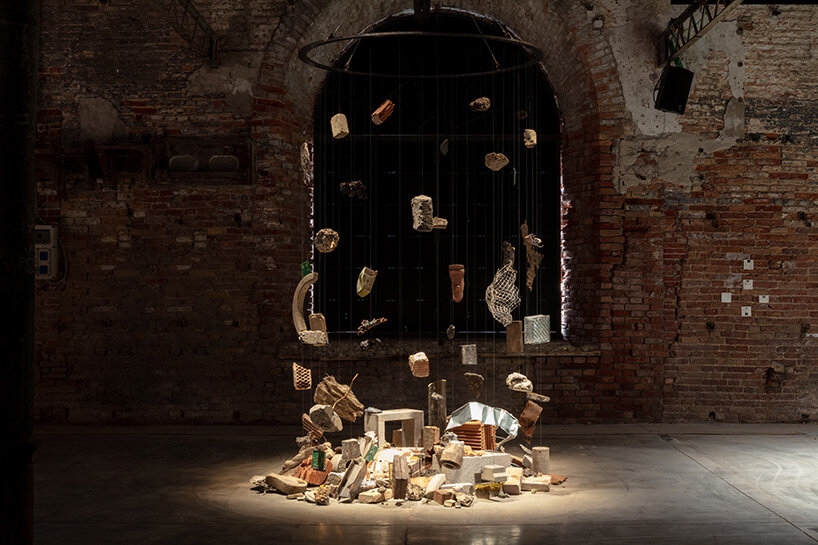
Forming Materials | image © Luca Capuano, courtesy La Biennale di Venezia
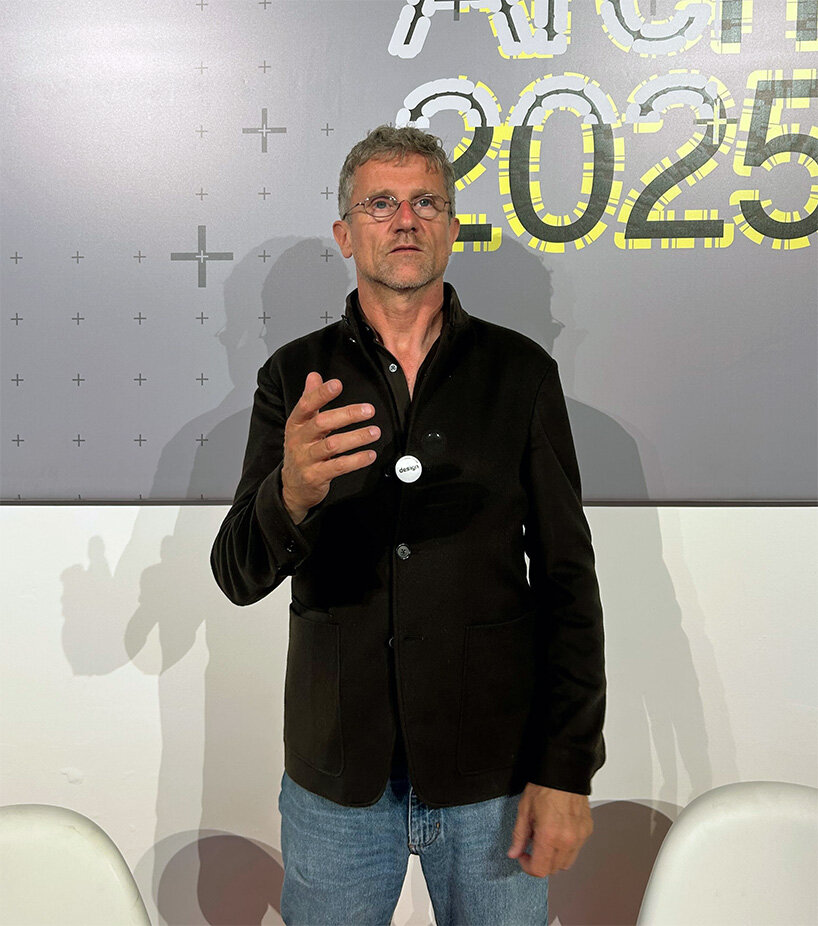
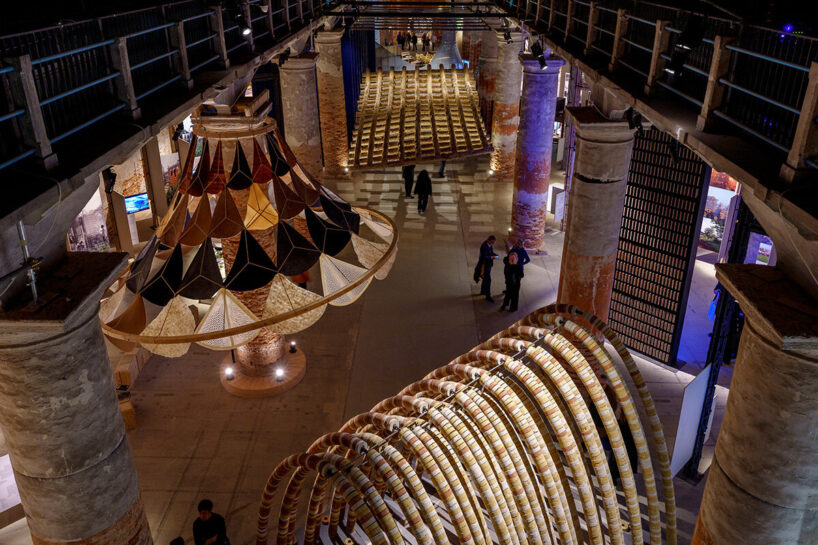
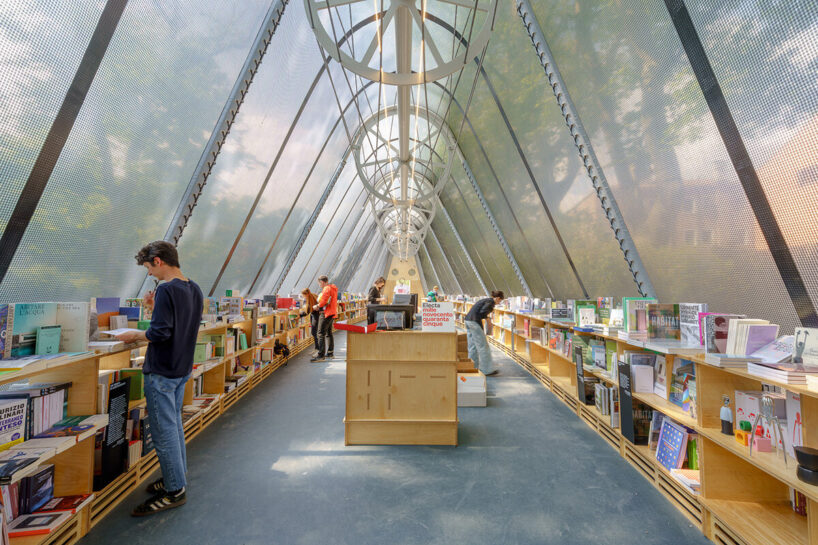
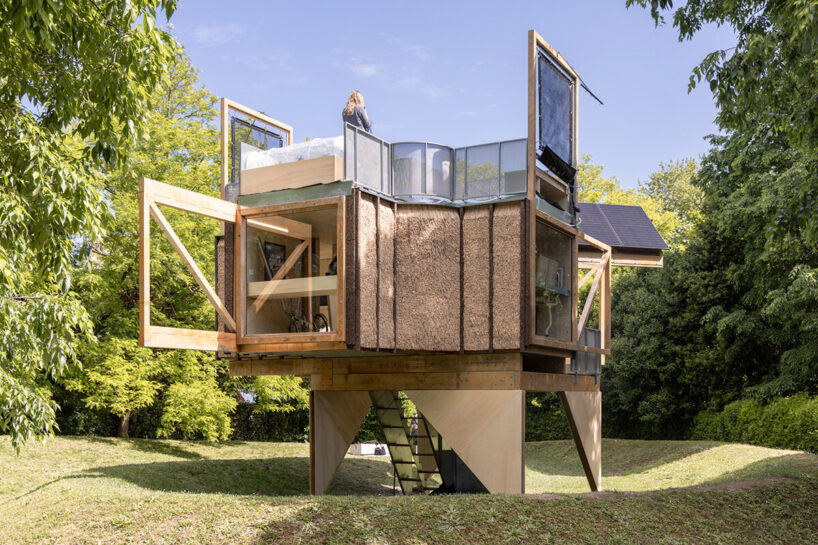
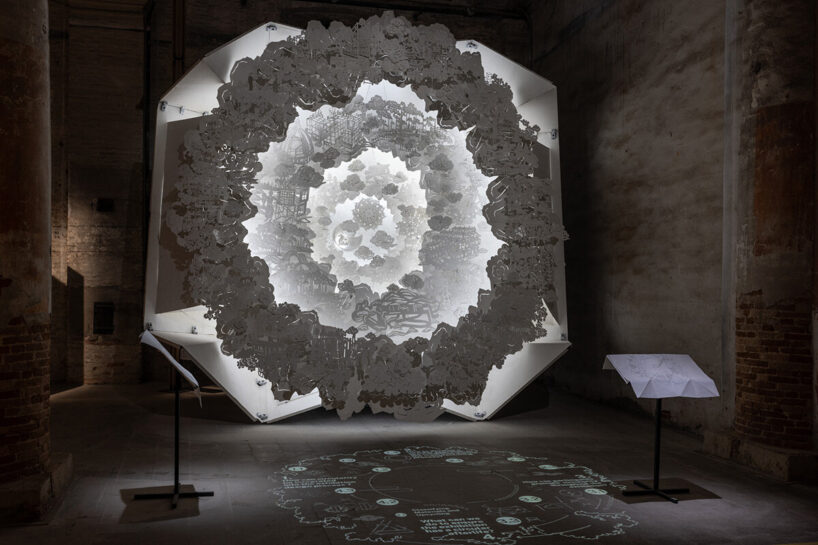
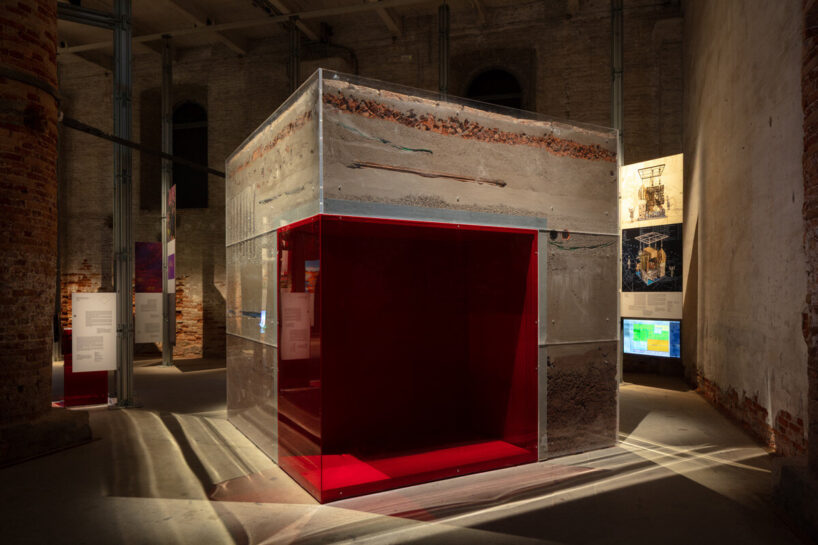
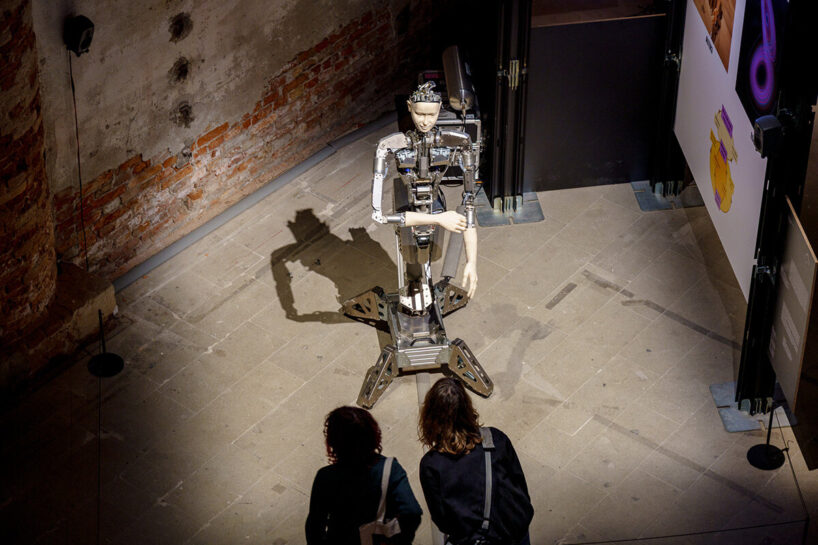
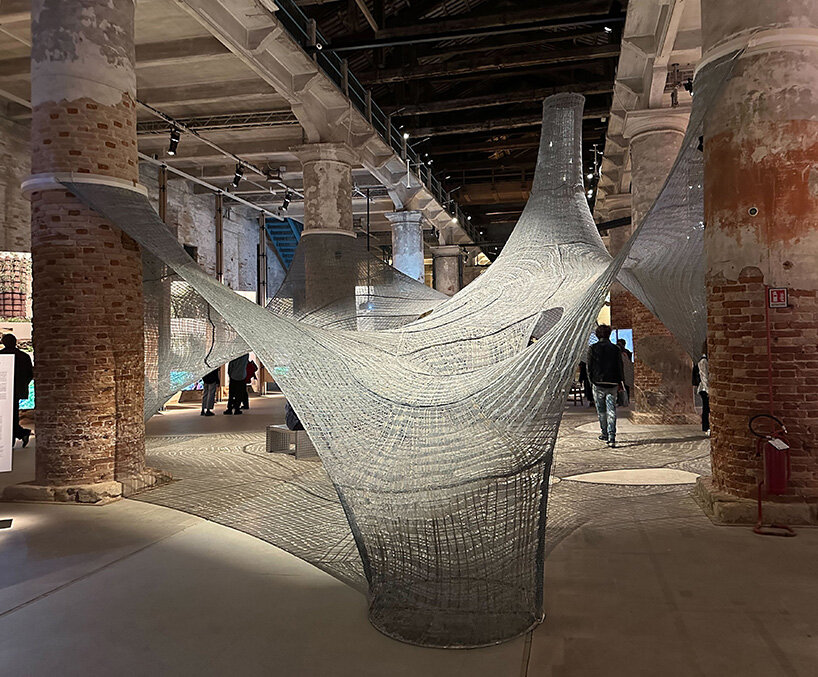
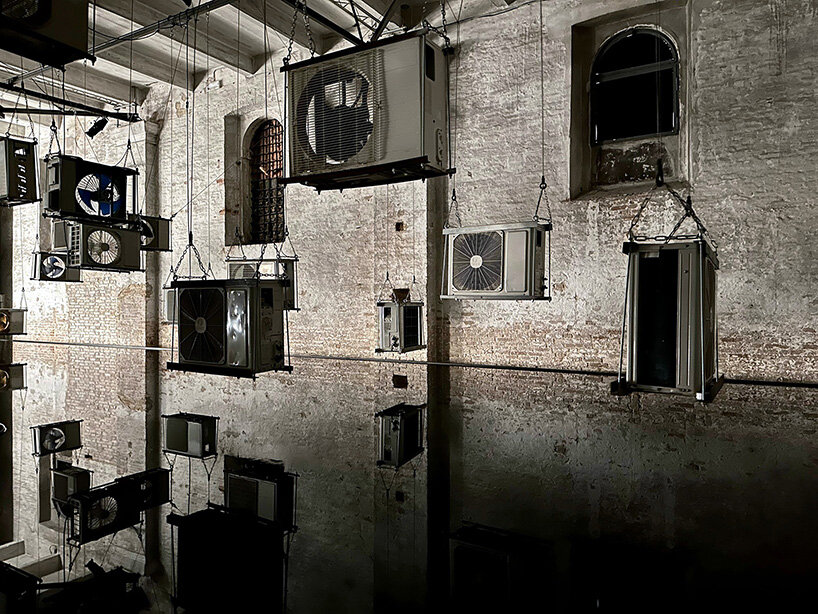
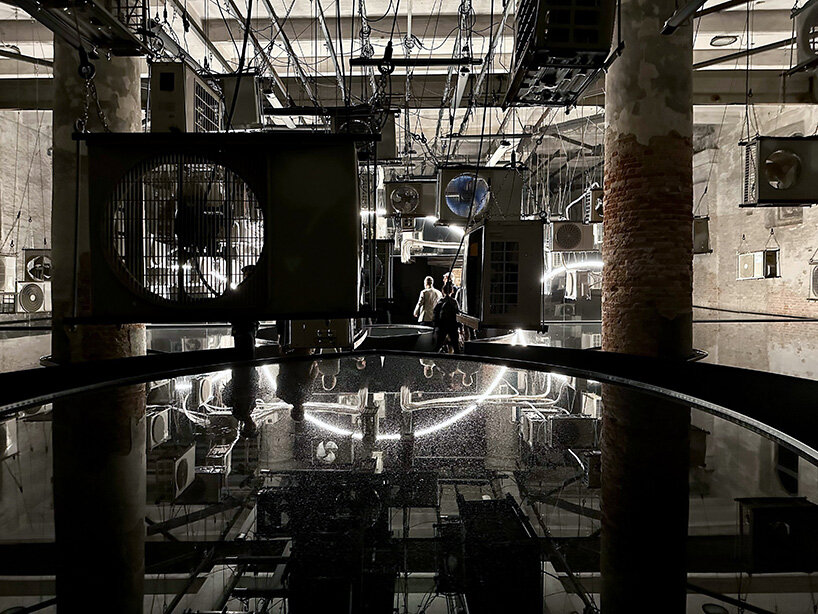
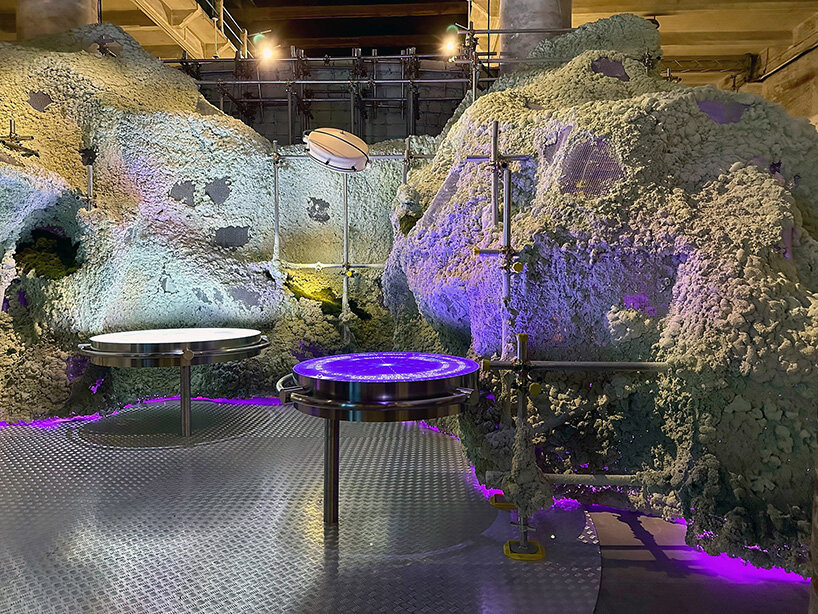
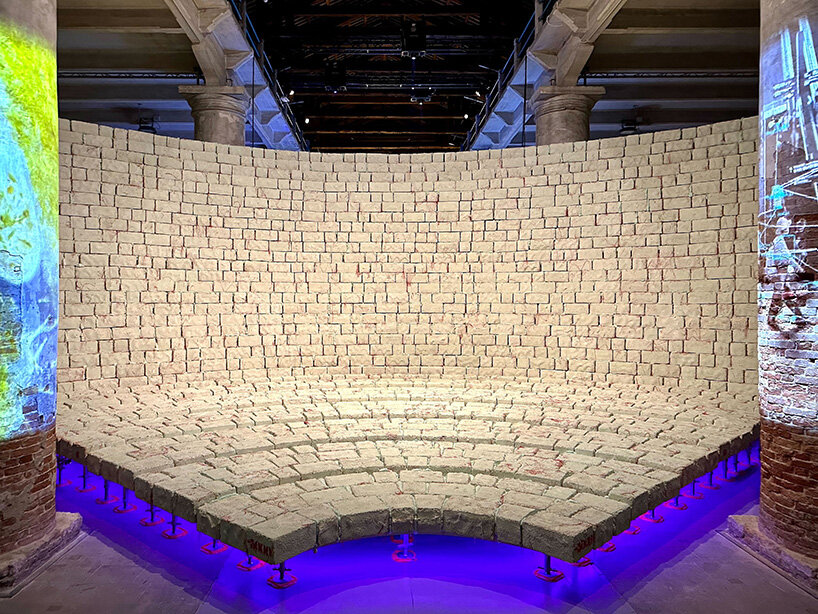
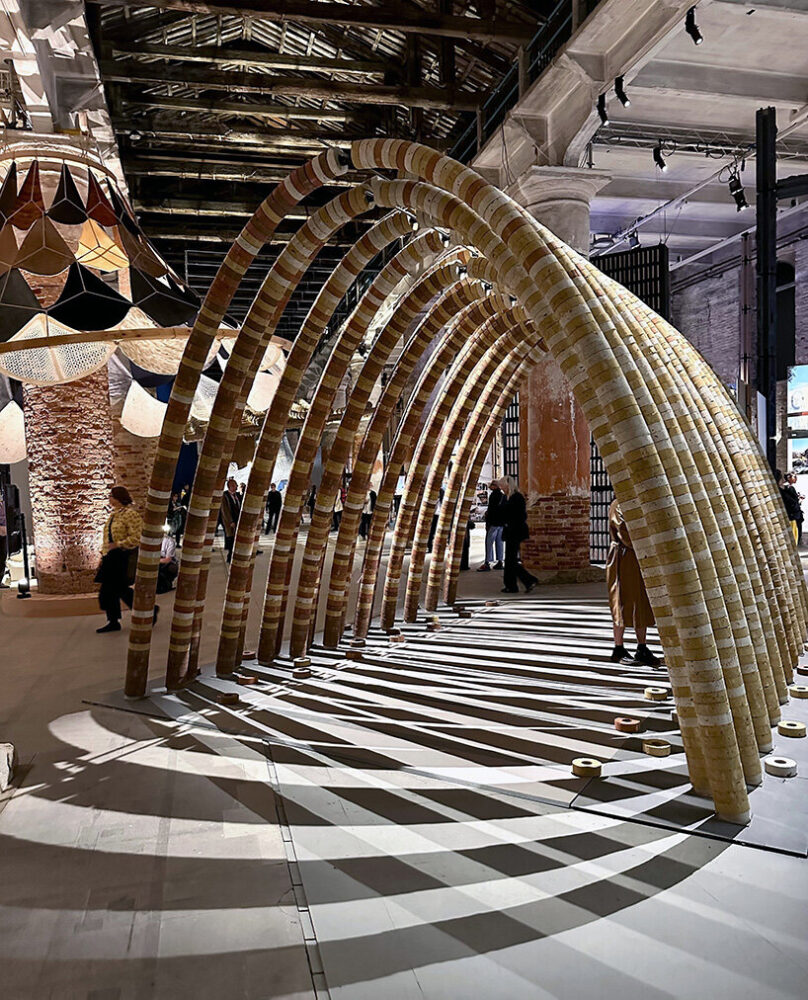


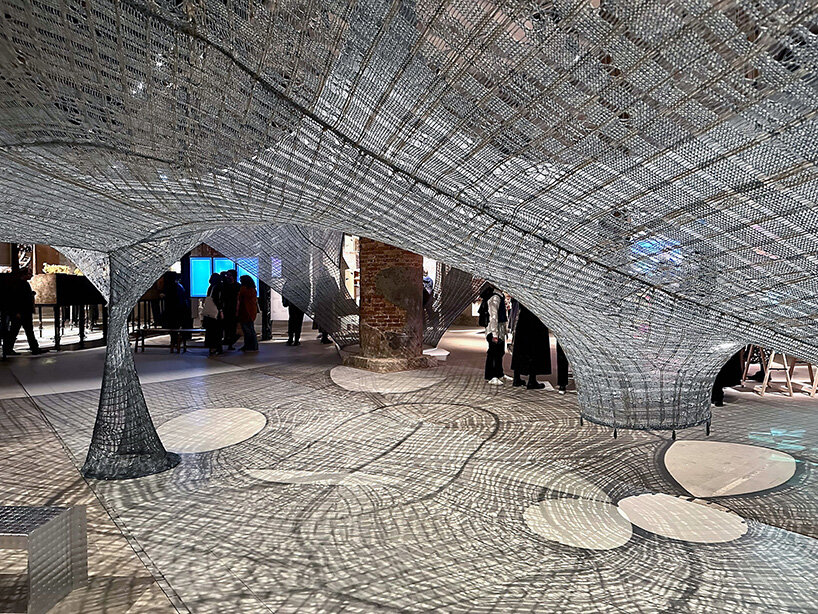
project info:
name: Intelligens. Natural. Artificial. Collective – 19th International Architecture Exhibition of La Biennale Di Venezia
curator: Carlo Ratti | @crassociati
dates: May 10 to November 23, 2025
follow our dedicated Venice Architecture Biennale Instagram account here for the latest announcements and live coverage.
